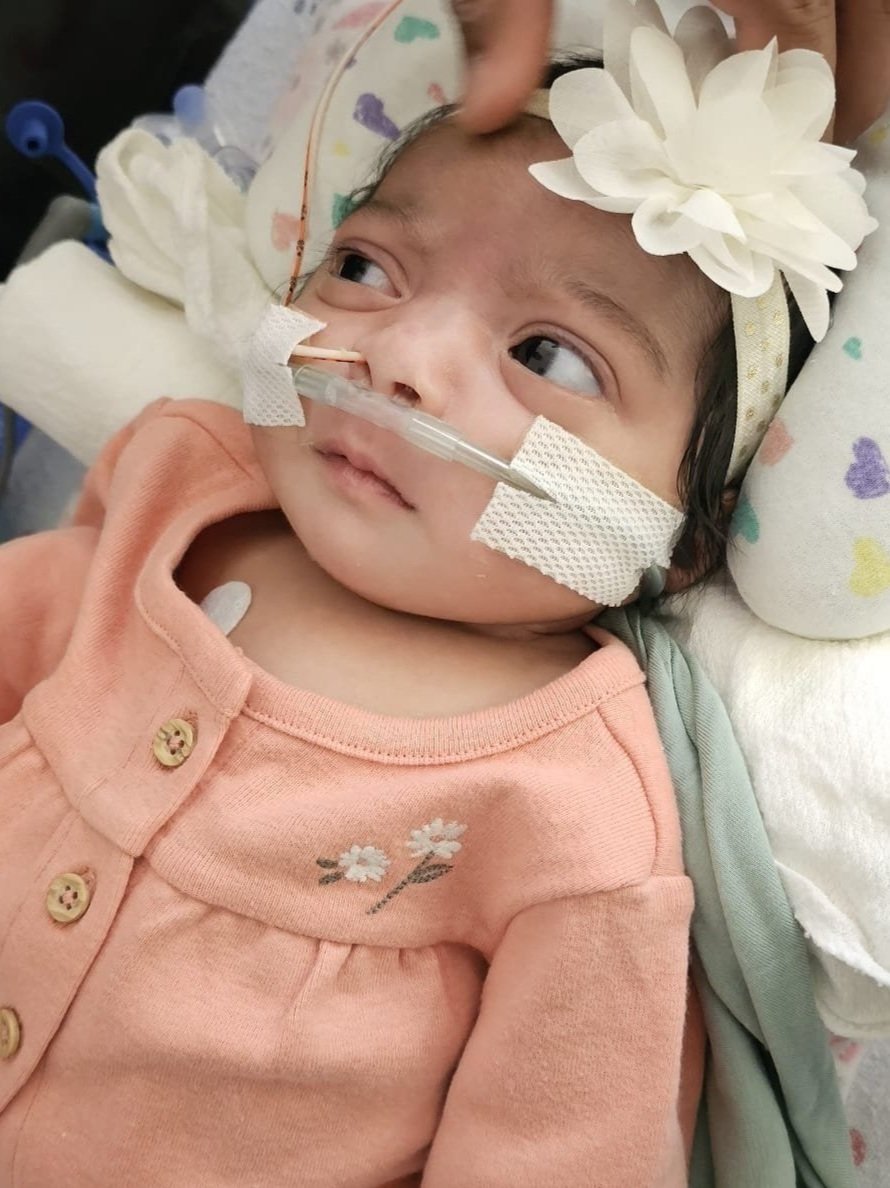The Journey
Zoya had a chronic condition, not an acute condition or illness. The distinction lies in the fact that time plays a significant role in Zoya's case. Doctors could not predict the future regarding whether, when, or how Zoya will develop her body parts as a normal child at this age is expected to. Since the 20th-week ultrasound, we have been in a state of uncertainty about how Zoya will fare after delivery and what level and type of support she will require to survive.
Skeletal dysplasia is a condition characterized by abnormal bone development and growth, and it has introduced a level of uncertainty into Zoya's prognosis. The mutated gene has had a profound impact on her skeletal structure, raising concerns about the growth and support of critical body components. Particularly, doctors were confronted with the uncertainty of predicting when, or even if, Zoya's chest walls would develop sufficiently to support her lungs.
Zoya's journey emphasized the importance of ongoing support, adaptive care, and a collaborative approach between medical professionals, Zoya, and her family. Despite the uncertainties, the focus remained on enhancing her quality of life and providing the necessary care to help her navigate the unique challenges posed by her chronic condition and skeletal dysplasia.
Zoya's NICU team conducted a family meeting to discuss Zoya's case, with everyone participating, including Zoya's parents, ENTs, Pulmonary, Neuro, Genetics, and her NICU care team. Together, we gathered to explore available options for Zoya, recognizing that keeping her intubated was not a viable long-term solution.
Following a highly productive discussion, two main options emerged for Zoya. The first suggestion was for Zoya to undergo a tracheostomy. However, the ENT expressed uncertainty about the procedure's smooth execution due to Zoya's neck instability and a very small neck gap. While not deeming it impossible, the ENT acknowledged it could be a tricky undertaking. As concerned parents, we raised numerous questions about the success rate, risks, and benefits of this major surgery. Upon careful consideration, it became evident that the risks outweighed the benefits for Zoya, potentially causing more harm than good in the long term.
The Pulmonary team and ENTs clarified that if the tracheostomy route were chosen, it would involve a tracheostomy with a mechanical vent, given Zoya's high dependence on peep pressure to keep her lungs inflated. The team remained uncertain whether this support would be temporary or a lifelong requirement for Zoya.
The second option was to attempt another extubation, given Zoya's low vent settings and readiness for the breathing tube to be removed. Similar to the previous extubation on November 16th, doctors acknowledged the uncertainty of predicting immediate success or a prolonged period of improved breathing. Optimistically, the medical team believed that Zoya, having grown since the last attempt, might fare better with a nasal cannula (NIPPV - Non-Invasive Positive Pressure Vent).
The decision to try another extubation was tough but considered fair for Zoya, providing her with the best chance possible. The pulmonary team actively contributed to preparing Zoya for the extubation. A plan was devised, stipulating that if Zoya failed the extubation, she would not be reintubated for the fourth time. In such a situation, the decision would be left to Allah and Zoya. In anticipation of potential challenges during the extubation, the palliative care team prepared to ensure a smooth transition for Zoya from this world to Jannat.
On January 5th, 2024, Zoya was extubated, signaling from the beginning that it was time for her to rest and continue her journey in a better place. Zoya's saturation did not recover, and her oxygen levels increased from 26% to 100% within an hour. It became clear that Zoya was ready, and her face reflected the calmness that marked that day.


